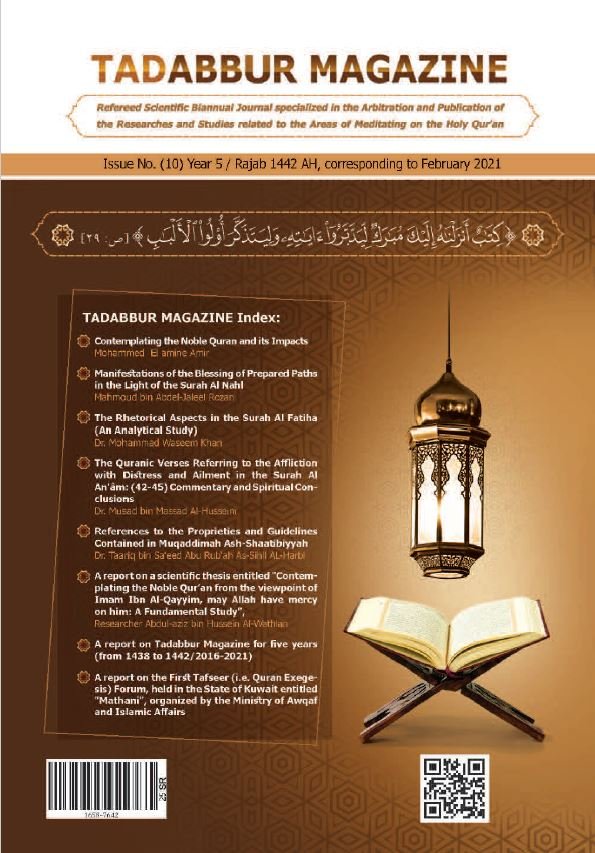Contemplating the Noble Quran and its Impacts
Main Article Content
Abstract
Topic of the Research:
This paper addresses the contemplation of the Noble Qur›an and its positive impact on the worshipper.
Objectives of the research:
1- To introduce the concept of contemplation and highlight its religious ruling, importance and objectives.
2- To clarify the principles, hindrances and desired fruits of contemplation and show how Muslim Predecessors dealt with it.
Problem of the Research:
The problem of this research is the contemplation of the Quranic verses and the effect of acting accordingly on bringing life to hearts and bodies, as well as the interrelationship between the life of hearts and bodies and that of the Muslim nation as a whole. On the other hand, understanding the Noble Qur›an through contemplation and acting upon are neglected by many people, and therefore this research is conducted to answer the following questions:
1- What is the concept of contemplation in the Noble Quran?
2- What are the rules and principles of contemplation?
3- How important is contemplation?
4- What are the fruits and impacts of contemplation?
Findings of the Research :
1- Contemplation materializes only by sticking to its principles and eliminating its hindrances.
2- Contemplation of the Noble Quran is enhanced by readers by finding out what it is and learning about its objectives.
3- One of the primary fruits of contemplation of the Noble Quran is its spiritual levels that readers can reach: reflection and faith, passion, devoutness, responsiveness, submission, learning lessons and deriving rulings and norms.
Downloads
Article Details
Conference Proceedings Volume
Section

This work is licensed under a Creative Commons Attribution-NonCommercial 4.0 International License.
Indicating to the intellectual property, copyrights, and open access right:
According to the Budapest Initiative 2002; tadabbur Journal, which is issued by Khibrat Taibah For Research and Studies in Medina, provides free open access to its publications, and applies the Creative Commons license:
Attribution- Non-Commercial 4.0 International (CC BY-NC 4.0) for the works it publishes from peer-reviewed scientific research and reports, which are freely available on the Internet, and which allows any user to read, download, copy, and distribute (Convert), print, search, or create links to the full texts of the journal’s research and publications, and analyze them in an automatic manner for discovering them, sending them as software data, or using them for any other legal purpose, without financial, legal, or other technical barriers beyond those related to Internet access.
It also highlight that the only barrier to reproduction and distribution, and the only role of copyright in this field, is the necessity of granting the authors of the journal’s research and reports and the publisher the journal; Control over their works, and the right to official recognition and reference citations.





